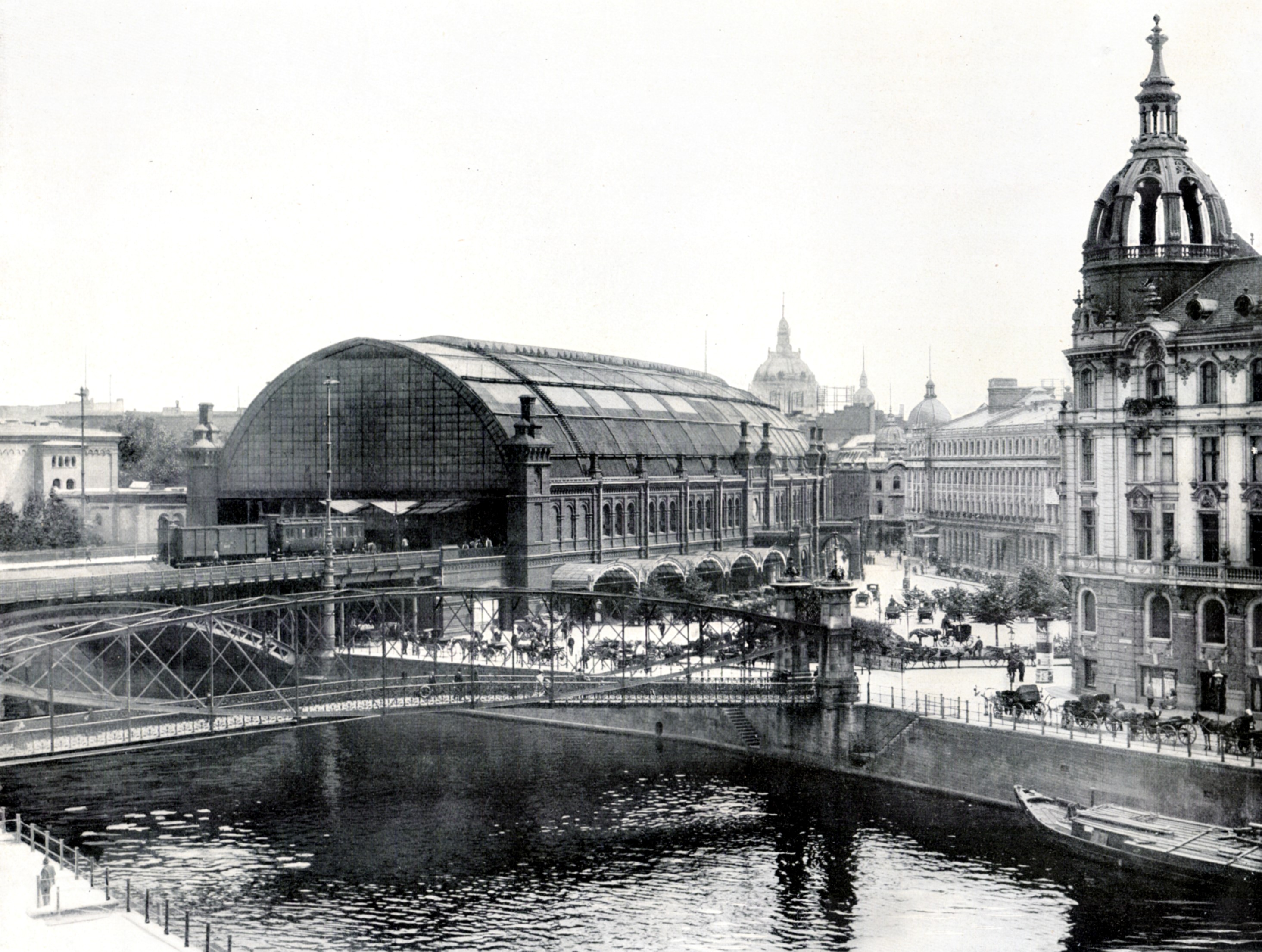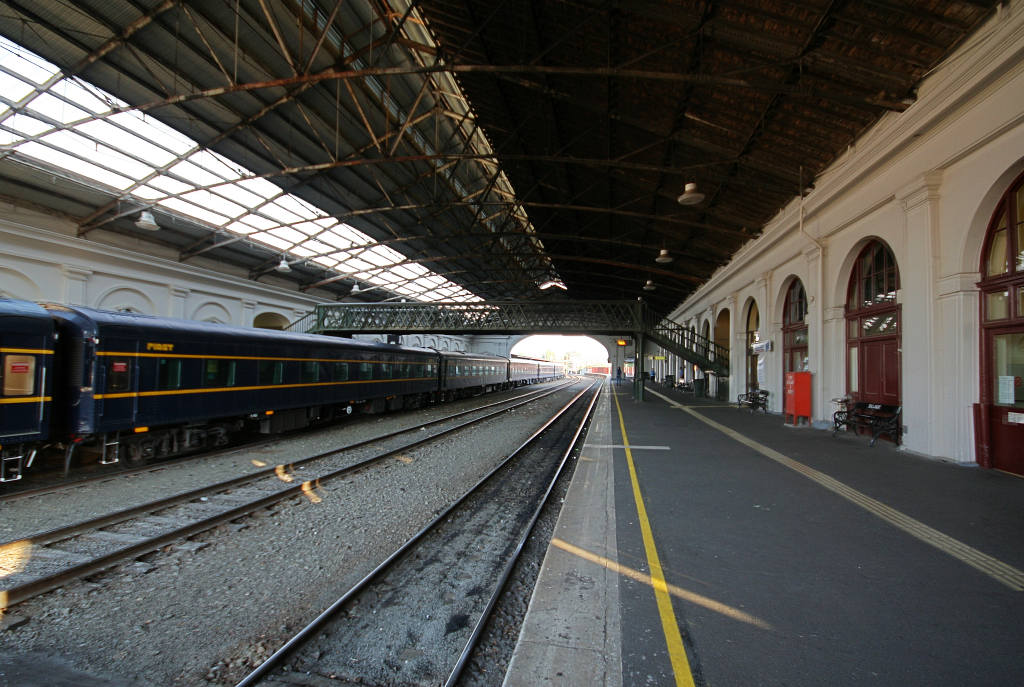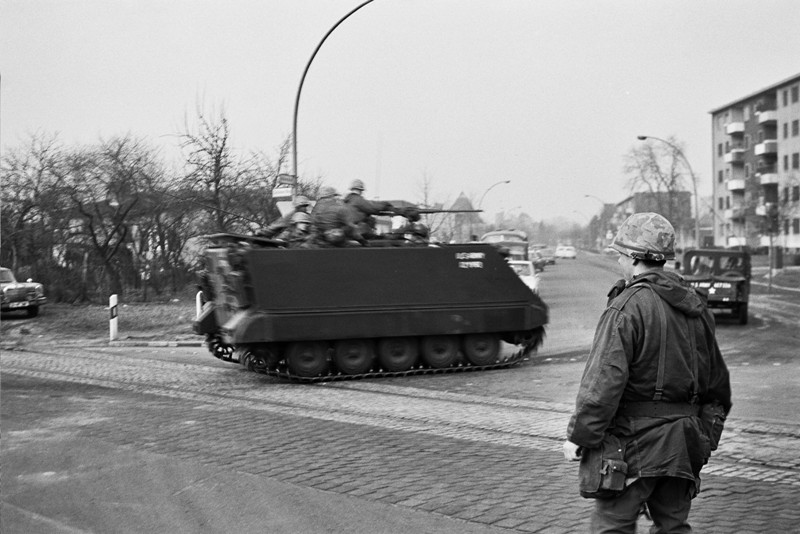|
Berlin Friedrichstraße Station
Berlin Friedrichstraße () is a railway station in the German capital Berlin. It is located on the Friedrichstraße, a major north-south street in the Mitte district of Berlin, adjacent to the point where the street crosses the river Spree. Underneath the station is the U-Bahn station ''Friedrichstraße''. Due to its central location in Berlin and its proximity to attractions such as the Unter den Linden boulevard, the Brandenburg Gate and the Reichstag, the station is a favorite destination for tourists. At the same time, it is the main junction for regional traffic in Berlin, measured by the number of passengers. During the Cold War, Friedrichstraße became famous for being a station that was located entirely in East Berlin, yet continued to be served by S-Bahn and U-Bahn trains from West Berlin, as well as long-distance trains from countries west of the Iron Curtain. The station was also a major border crossing between East and West Berlin. History The original statio ... [...More Info...] [...Related Items...] OR: [Wikipedia] [Google] [Baidu] |
Friedrichstraße
Friedrichstraße, or Friedrichstrasse (see ß; ) (lit. ''Frederick Street''), is a major culture and shopping street in central Berlin, forming the core of the Friedrichstadt neighborhood and giving the name to Berlin Friedrichstraße station. It runs from the northern part of the old Mitte district (north of which it is called Chausseestraße) to the Hallesches Tor in the district of Kreuzberg. This downtown area is known for its expensive real estate market and the campus of the Hertie School of Governance. Due to its north-southerly direction, it forms important junctions with the east-western axes, most notably with Leipziger Straße and Unter den Linden. The U6 U-Bahn line runs underneath. During the Cold War it was bisected by the Berlin Wall and was the location of Checkpoint Charlie. Overview As central Berlin's traditional shopping street, Friedrichstraße is three blocks east of the parallel Wilhelmstraße, the historic heart of the old government quarte ... [...More Info...] [...Related Items...] OR: [Wikipedia] [Google] [Baidu] |
Reichstag Building
The Reichstag (; ) is a historic legislative government building on Platz der Republik in Berlin that is the seat of the German Bundestag. It is also the meeting place of the Federal Convention, which elects the President of Germany. The Neo-Renaissance building was constructed between 1884 and '94 in the Tiergarten district on the left bank of the River Spree to plans by the architect Paul Wallot. It housed the Reichstag (legislature) of the German Empire and subsequent Weimar Republic. The Reich's Federal Council also originally met there. The building was initially used by the Reichstag for Nazi Germany, but severe damage in the Reichstag fire of 1933 prevented further use and the Reichstag moved to the nearby Kroll Opera House. The 1933 fire became a pivotal event in the entrenchment of the Nazi regime. The building took further damage during World War II, and its symbolism made it an important target for the Red Army during the Battle of Berlin. After the war, t ... [...More Info...] [...Related Items...] OR: [Wikipedia] [Google] [Baidu] |
Train Shed
A train shed is a building adjacent to a station building where the tracks and platforms of a railway station are covered by a roof. It is also known as an overall roof. Its primary purpose is to store and protect from the elements train cars not in use, The first train shed was built in 1830 at Liverpool's Crown Street railway station, Crown Street Station. The biggest train sheds were often built as an arch of glass and iron, while the smaller were built as normal pitched roofs. The train shed with the biggest single span ever built was that at the second Broad Street Station (Philadelphia), Philadelphia Broad Street Station, built in 1891. Types of train shed Early wooden train sheds The earliest train sheds were wooden structures, often with unglazed openings to allow smoke and steam to escape. The oldest part of Bristol Temple Meads railway station, Bristol Temple Meads is a particularly fine – and large – example, designed by Isambard Kingdom Brunel with mock-ha ... [...More Info...] [...Related Items...] OR: [Wikipedia] [Google] [Baidu] |
Berlin Hackescher Markt Station
Berlin Hackescher Markt is a railway station in the Mitte district of Berlin, Germany. It is named after the adjacent ''Hackescher Markt'' square. Overview The station is located on the elevated Berlin Stadtbahn line, which crosses central Berlin from east to west. The Stadtbahn carries local Berlin S-Bahn, S-Bahn services on one pair of tracks, and longer distance services on another pair. Hackescher Markt station is served by S-Bahn lines , , and . Longer distance services pass the station without stopping. The station opened in 1882 and was originally named ''Börse'' (stock exchange) and then ''Marx-Engels-Platz'' during the East Germany, GDR era. In 1992 it received the name ''Hackescher Markt'' from the adjacent square. Following the demolition of the Berlin Hauptbahnhof#Lehrter Stadtbahnhof from 1882 to 2002, Lehrter Stadtbahnhof (architecturally similar and previously Listed building, listed), with Berlin Bellevue railway station, Bellevue it is now one of only two Stadt ... [...More Info...] [...Related Items...] OR: [Wikipedia] [Google] [Baidu] |
Johannes Vollmer
Johannes is a Medieval Latin form of the personal name that usually appears as "John" in English language contexts. It is a variant of the Greek and Classical Latin variants (Ιωάννης, '' Ioannes''), itself derived from the Hebrew name '' Yehochanan'', meaning "YHWH is gracious". The name became popular in Northern Europe, especially in Germany because of Christianity. Common German variants for Johannes are ''Johann'', ''Hannes'', '' Hans'' (diminutized to ''Hänschen'' or ''Hänsel'', as known from "''Hansel and Gretel''", a fairy tale by the Grimm brothers), '' Jens'' (from Danish) and '' Jan'' (from Dutch, and found in many countries). In the Netherlands, Johannes was without interruption the most common masculine birth name until 1989. The English equivalent for Johannes is John. In other languages *Joan, Jan, Gjon, Gjin and Gjovalin in Albanian *'' Yoe'' or '' Yohe'', uncommon American form''Dictionary of American Family Names'', Oxford University Press, 2013. *Ya� ... [...More Info...] [...Related Items...] OR: [Wikipedia] [Google] [Baidu] |
Brockhaus 14 Berlin Bahnhof Friedrichstraße
Brockhaus may refer to: * Friedrich Arnold Brockhaus (1772–1823), German encyclopedia publisher and editor ** F.A. Brockhaus AG, his publishing firm ** ''Brockhaus Enzyklopädie'', an encyclopedia published by the firm ** 27765 Brockhaus, an asteroid named for him * Hermann Brockhaus (1806–1877), German orientalist See also *Brockhaus and Efron Encyclopedic Dictionary The ''Brockhaus and Efron Encyclopaedic Dictionary'' (35 volumes, small; 86 volumes, large) is a comprehensive multi-volume encyclopaedia in Russian. It contains 121,240 articles, 7,800 images, and 235 maps. It was published in the Russian Em ..., a Russian-language encyclopedia {{disambiguation, surname German-language surnames ... [...More Info...] [...Related Items...] OR: [Wikipedia] [Google] [Baidu] |
Berlin Bahnhof Friedrichstrasse Schluetersteg 1900
Berlin ( ; ) is the Capital of Germany, capital and largest city of Germany, by both area and List of cities in Germany by population, population. With 3.7 million inhabitants, it has the List of cities in the European Union by population within city limits, highest population within its city limits of any city in the European Union. The city is also one of the states of Germany, being the List of German states by area, third smallest state in the country by area. Berlin is surrounded by the state of Brandenburg, and Brandenburg's capital Potsdam is nearby. The urban area of Berlin has a population of over 4.6 million and is therefore the most populous urban area in Germany. The Berlin/Brandenburg Metropolitan Region, Berlin-Brandenburg capital region has around 6.2 million inhabitants and is Germany's second-largest metropolitan region after the Rhine-Ruhr region, as well as the List of EU metropolitan areas by GDP, fifth-biggest metropolitan region by GDP in the European Union. ... [...More Info...] [...Related Items...] OR: [Wikipedia] [Google] [Baidu] |
Conde Nast Traveler
Conde is the Ibero-Romance form of "count" (Latin ''comitatus''). It may refer to: * Counts in Iberia *List of countships in Portugal Places United States * Conde, South Dakota, a city France * Condé-sur-l'Escaut (or simply 'Condé'), a commune Brazil * Conde, Bahia Surname *Conde (surname) See also *Count *Comte (other) (French, Catalan and Occitan term for "Count") *Conte (other) Conte may refer to: * Conte (literature), a literary genre * Conte (surname) * Conté, a drawing medium * Conte, Jura, town in France * Conté royal family, a fictional family in Tamora Pierce's Tortallan world * Conte, the title of Count ... (Italian term for "Count") * Condé (other) {{disambiguation ... [...More Info...] [...Related Items...] OR: [Wikipedia] [Google] [Baidu] |
Berlin Border Crossings
The Berlin border crossings were border crossings created as a result of the post-World War II Potsdam Conference, division of Germany. Prior to the construction of the Berlin Wall in 1961, travel between the Eastern and Western sectors of Berlin was completely uncontrolled, although restrictions were increasingly introduced by the Soviet and East German authorities at major crossings between the sectors. This free access, especially after the closure of the Inner German border, allowed the Eastern Bloc emigration and defection to occur. East German officials, humiliated by this mass defection, subsequently chose to erect the Berlin Wall in order to prevent residents from leaving East Germany. After the construction of the Berlin Wall in 1961, border stations between East Berlin (regarded as East Germany's capital by the German Democratic Republic but Exclusive Mandate, unrecognized by the Western Bloc, Western Allies) and the sectors controlled by those three Western Allies were ... [...More Info...] [...Related Items...] OR: [Wikipedia] [Google] [Baidu] |
Iron Curtain
The Iron Curtain was the political and physical boundary dividing Europe into two separate areas from the end of World War II in 1945 until the end of the Cold War in 1991. On the east side of the Iron Curtain were countries connected to the Soviet Union, and on the west side those that were NATO members. Economic and military alliances developed on each side of the Iron Curtain, and it became a term for the physical barriers of razor wire, Fence, fences, Fortified wall, walls, minefields, and Watchtower, watchtowers built along it. The nations to the east of the Iron Curtain were People's Republic of Poland, Poland, East Germany, Socialist Republic of Czechoslovakia, Czechoslovakia, Hungarian People's Republic, Hungary, Socialist Republic of Romania, Romania, People's Republic of Bulgaria, Bulgaria, People's Republic of Albania, Albania, and the USSR; however, Reunification of Germany, East Germany, Breakup of Czechoslovakia, Czechoslovakia, and the Dissolution of the USSR, USS ... [...More Info...] [...Related Items...] OR: [Wikipedia] [Google] [Baidu] |
West Berlin
West Berlin ( or , ) was a political enclave which comprised the western part of Berlin from 1948 until 1990, during the Cold War. Although West Berlin lacked any sovereignty and was under military occupation until German reunification in 1990, the territory was claimed by the West Germany, Federal Republic of Germany (FRG or West Germany), despite being entirely surrounded by the East Germany, German Democratic Republic (GDR or East Germany). The legality of this claim was contested by the Soviet Union and other Eastern Bloc countries. However, West Berlin de facto aligned itself politically with the FRG from May 1949 and was thereafter treated as a ''de facto'' city-state of that country. After 1949, it was directly or indirectly represented in the institutions of the FRG, and most of its residents were citizens of the FRG. West Berlin was formally controlled by the Western Allies and entirely surrounded by East Berlin and East Germany. West Berlin had great symbolic signi ... [...More Info...] [...Related Items...] OR: [Wikipedia] [Google] [Baidu] |
East Berlin
East Berlin (; ) was the partially recognised capital city, capital of East Germany (GDR) from 1949 to 1990. From 1945, it was the Allied occupation zones in Germany, Soviet occupation sector of Berlin. The American, British, and French sectors were known as West Berlin. From 13 August 1961 until 9 November 1989, East Berlin was separated from West Berlin by the Berlin Wall. The Western Allied powers did not recognize East Berlin as the GDR's capital, nor the GDR's authority to govern East Berlin. For most of its administrative existence, East Berlin was officially known as Berlin, capital of the GDR () by the GDR government. On 3 October 1990, the day Germany was officially German reunification, reunified, East and West Berlin formally reunited as the city of Berlin. Overview With the London Protocol (1944), London Protocol of 1944 signed on 12 September 1944, the United States, the United Kingdom, and the Soviet Union decided to divide Nazi Germany, Germany into three occ ... [...More Info...] [...Related Items...] OR: [Wikipedia] [Google] [Baidu] |







